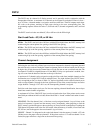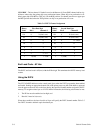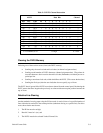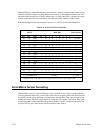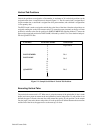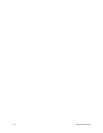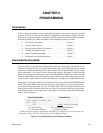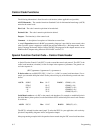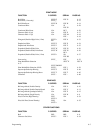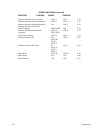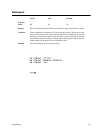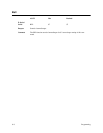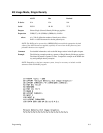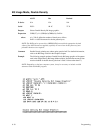
6–3Programming
NOTE:
SFCC commands must be terminated by a semicolon (;) in a BASIC pr
ogram or by
text
following the command string. A paper motion command dir
ectly following a special
function
code command may r
esult in err
oneous paper movement.
You can control print format, print mode, or international language selection by a longer sequence
known
as a Command Line. Command Lines are “string” type commands placed between complete
lines
of text and af
fect the text which follows. The printer has six Command Lines: PMODE, OSET
,
PSET,
LPI, LINES, and INCHES. Each of these Command Lines
is discussed in this chapter under the
appropriate Control Code function.
For
example, when in P–Series emulation, you can set the form length in inches
using the following
command line:
SFCC INCHES;n.f
where: “n”
is the whole number of inches, and “f” is the fractional increment
in 0.5” incre
-
ments.
When
using the SFCC in a Command Line, the SFCC must be the first
non–blank symbol in the line
(“space,” hex 20, is a blank symbol). In addition, characters following spaces (other than a valid line
terminator) in a Command Line are ignored so that you can include program comments on the Com
-
mand
Line. V
alid line terminators are: Form Feed (FF), Line Feed (LF), and Carriage Return (CR). The
valid
line terminator does not produce paper motion. If a Command Line contains an error
, the com
-
mand is not executed, and the line truncates to include any of the following error messages:
Command Line Err
or Messages
Error
Message
Explanation
INV
ALID P
ARAMETER
The command r
eceived cannot be interpr
eted
correctly,
or the corr
ect command is not followed by an
expected
delimiter
.
P
ARAMETER OUT
OF
BOUNDS
A decimal parameter in the command is out of range.
MISSING P
ARAMETER
ILLEGAL
CHARACTER IN
One or mor
e necessary parameters is missing
fr
om the command.
DECIMAL PARAMETER
TOO MANY
DIGITS IN
DECIMAL PARAMETER
A decimal parameter contains a non–numeric
character
, or a fractional digit is out of range.
A decimal parameter contains too many digits.
Attribute Set and Reset Codes
Certain
print attributes are set and
reset (turned on or of
f) by using the appropriate ESC or SFCC code
sequence and the values 1 or 0. These values may be either the hexadecimal code 01 and 00, or the
ASCII
code for the printable symbols of decimal 1 and 0 (hexadecimal code 31 and 30, respectively).
Expanded
Print, Super/Subscript
Print, and Underline are attributes which are set/reset in this fashion.



